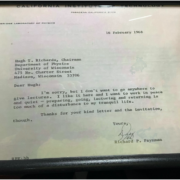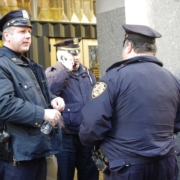The Little Graffiti and Name-Writing Book Distributor and Publisher That Could
Since the dawn of contemporary graffiti (and later street art) there’s been a proliferation of hard copy and on-line publications on this subject.
Some of the original hard copy efforts were zines; self-produced publications, resembling magazines, that were sold at independent book shops, or among graffiti writers and nerds. These creative efforts were generally not done to make money, but to share graffiti-related content (i.e., photos and information about writers, places, and techniques) among practitioners and aficionados. Meanwhile the producers of these creative efforts were lucky if they were able to recoup the costs of production.
By the same token, a handful of scholarly publishers (including university presses) occasionally acquired and published books on graffiti (or more commonly street art).
Likewise art world book publishers such as Abrams Books, Phaidon, Prestel, Schiffer, Taschen, Thames & Hudson have released a handful of books on name writing, graffiti, or more usually ones that integrate both graffiti and street art, featuring well-known street artists like Banksy or books that provide a visual overview on a theme (i.e., urban art in a geographic location).
Smaller publishing houses such as Dokument Press, From Here to Fame, Gingko Press, and Laurence King Publishing also occasionally print books on graffiti, street art, and/or the work of a well-known graff writers or street artists. Few publishers, however, have specialized on both publishing books on graffiti and distributing this material to eager customers. It’s not clear why, but I suspect that acquiring, editing, printing and distributing monographs on this topic is not that profitable.
But then there is Hitzerot. Based in Berlin, Germany, and started in 2015 by Sascha Blasche (34) and Steffen Köhler (38), both former graff writers and graff book enthusiasts, Hitzerot is an enigma, among book distributors and publishers. Since their founding, they’ve not only sold 200 different titles centered around graffiti or name writing, but they currently have 140 of them in stock. That’s not all. Hitzerot has published 28 books, 9 magazines and a handful of prints to hang on the wall.
According to their website, “Our stock consists of must-have evergreens, extensive monographs, limited zines, important major releases, scientific readers, print editions and of course a broad variety of our own Hitzerot volumes.”
Although it has a rather large on-line presence, Hitzerot, which was named after a legendary, now banned and obsolete, type of red spray paint, once popular among graffiti writers in Berlin is physically located in a relatively nondescript storefront that also doubles as a warehouse in Moabit, Berlin. The small space is crowded with boxes upon boxes of books, shelves filled to the brim with books, a loft for additional storage, and a counter. Even though the space had a toilet, there was no heat which Sascha said helped keep the rent low.
A little background. Sascha, who grew up in Lichterfelde in South Berlin, is a former illegal graffiti writer. Steffen, on the other hand, was raised in Neubrandenburg, and moved to Berlin in 2007. He initially worked in graphic design and in art direction for an advertising company. Although he used to do graffiti, he is more interested in taking photographs of this type of urban art.
In 2012, Sascha started publishing Auri Sacra Fames, a magazine focusing on the Berlin graffiti scene, and did a total of five volumes.
When Sascha was working on the magazine’s first issue he asked photographers and “spotters,” as they often call themselves, for material to better convey an authentic overall picture of the graffiti scene. A befriended photographer introduced Steffen to him and Steffen kindly provided photos for the first issue of graffiti on trains and walls in Berlin.
According to Sascha, “There were lots of graff related magazines at the time.” But there was a lot of intransparent curation among people who produced these publications. In particular, they publish the work of their friends or people they personally know. He notes, “I used to have a section in each of the magazines that would focus on certain areas and populate from each. This strategy was designed to reduce favoritism.”
Sascha adds, “There were lots of magazines at the time. The idea of starting a publishing house came out of the magazine as a way to distribute other graffiti related publications.”
Although the idea of establishing a book distribution/publishing house came out of the magazine, it was not really connected to this representative focus Sascha had for the magazine. He states that, “It was more like another project back then where I could bring in my knowledge of running a small online shop knowing how to distribute the magazine and my contacts I made during the years of publishing it.”
Steffen also suggests that, “The idea was to combine several good and well thought out publications in one shop instead of having them all in different small simple online ones. Back then (and it still to this day) it was common to create a shop like BigCartel, a very simple, easy to handle shop system, for each new publication someone did. We thought to build a proper online shop with more photos of the product and a deeper insight through the text (review-like) would be a good idea. At first for our own publications, but very soon we started listing other people’s publications we like as well.”
Their first effort was a photographic book on painted trains in Berlin with a different approach as the documentation style, as you can find in Sacha’s magazine for example. It was called Farbzüge (which might be best translated as “coloured trains.”
Although Sascha is more interested in old-school graffiti writing and writers, Steffen leans more toward new school graffiti practices. Regardless, both of them know what is happening with graffiti, not only in Berlin, but Germany and around the world, including who the players are, who is hot, who is active and who is inactive, the locations and the styles of the past, and which ones are emerging.
Sascha and Steffen have worked out an equitable division of labor. Sascha primarily takes care of writing advertising copy, including descriptions of books, proof-reading, order fulfillment. Steffen, on the other hand, supervises the website’s backend, conception and layout, the identification and implementation of new technologies, and methods to improve business processes. Both admit that order fulfillment, preparing new releases, maintenance of the website, and responding to inquiries eats up a large part of the day.
Meanwhile some times of the year that are busier than others. They are always very busy just before the UNLOCK book fair (an annual meeting where publishers meet and display their merchandise).
Typically Hitzerot tries to release one or more new books just before or at this venue. To these ends, they are presenting two new books at the UNLOCK book fair. The first one is Theorie des Style/Theory of Style which is a re-issue of the 1996 book of the same name. They are going to release the book in both English and in German versions.
The second one, in which Steffen is one of three co-authors/editors, is Daniel Weissbach aka COST aka DTagno, I features the work of the iconic German based graffiti writer and street artist (1976- 2020).
From the beginning, neither Sascha nor Steffen draw a salary out of the business. Instead they try to pump the profits back into the running of Hitzerot. That’s why both of them work half time in other jobs to be able to keep Hitzerot running.
Steffen admits that, “we could distribute or produce a lot more street art books, or ones about popular street artists like Banksy, or mainstream graffiti books, but we want to spend our time on books that focus on interesting graffiti and name writing. We want to pick the gold. We want to distribute titles that are hard to get. Hitzerot won’t be any good if we watered things down.”
In short, in addition to wanting to invest all their time into the business and not depend on part time jobs, they want to distribute the books that they like.
Some of their future plans include being more efficient in distributing books and magazines that would allow them to bring out more of their own titles as a publishing house.
Sascha states that, “most graff writers constantly read all the graffiti surrounding them, to see who’s up and who’s good. And publications and the ‘afterlife’ of graffiti as/on photographs and its publication are important parts of the whole graffiti game. Moreover graff writers would rather be famous (among fellow writers) than rich.” And that is why Sascha and Steffen see their roles not only as book distributors and publishers, but as curators and archivists too.
According to their website, they “constantly kept our eyes open for interesting content and the most relevant titles. Our mission from day one has not changed: We are aiming to offer you the highest quality publications with a graffiti context out there.”












